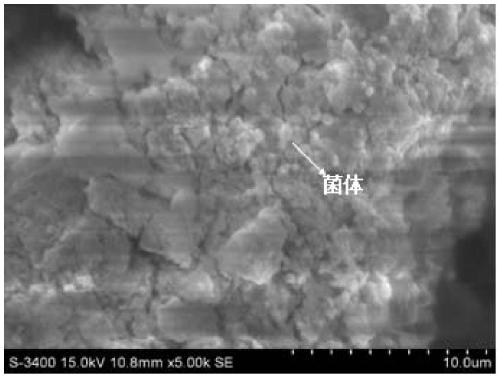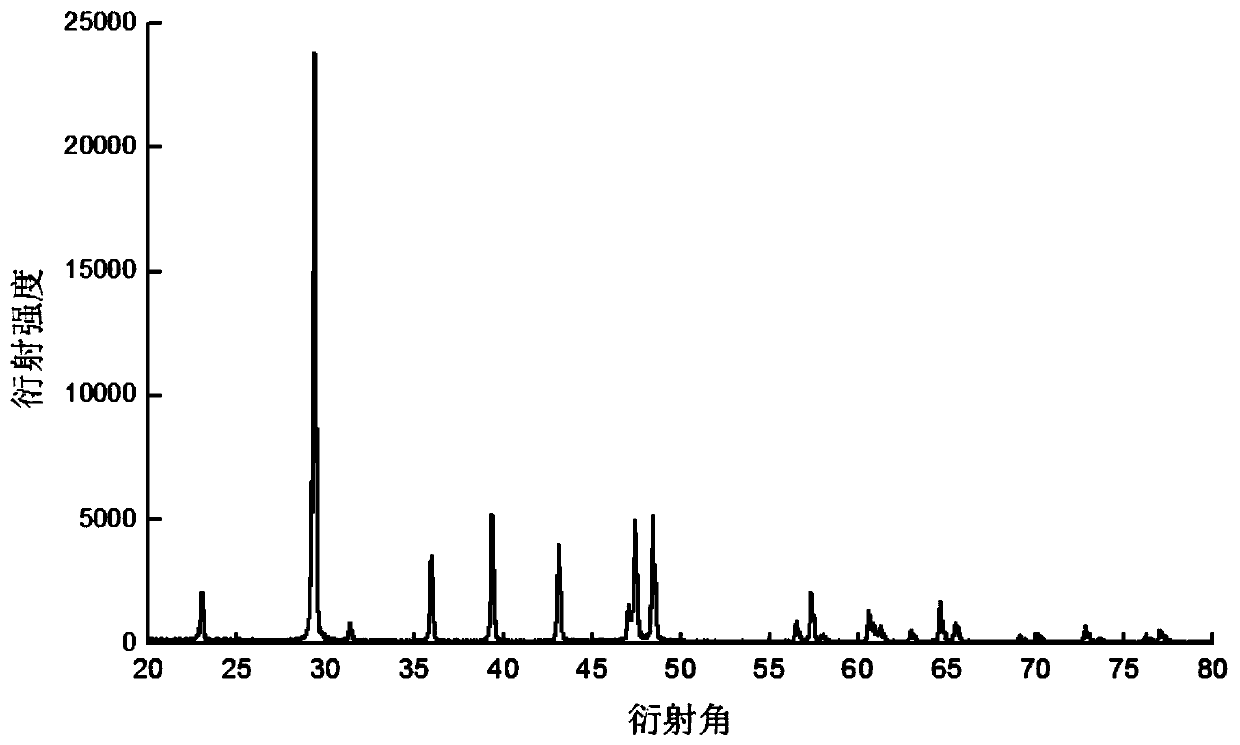A kind of low-alkali gel-encapsulated microbial self-healing agent and its application
A microbial and self-healing technology, applied in the biological field, can solve the problems of limited slag or ceramsite loading, limited repair efficiency, strength loss, etc., to save maintenance funds, improve repair efficiency, and good compatibility.
- Summary
- Abstract
- Description
- Claims
- Application Information
AI Technical Summary
Problems solved by technology
Method used
Image
Examples
Embodiment 1
[0028] A low-alkali gel-encapsulated microbial self-healing agent is prepared by the following method. Sporosarcina pasteurii is inoculated in the basic medium, and each liter of the culture medium contains 3g of beef extract, 5g of peptone and 18g of urea , shake culture at 37°C on a water bath shaker at a speed of 100rpm. After 21 days, centrifuge the obtained culture liquid at a speed of 4000rpm on a centrifuge for 10min, remove the supernatant and collect the spore liquid with deionized water to concentrate the spore The final concentration of the solution was controlled at 2×10 9 cell / ml. Prepare beef extract and peptone mass ratio of 1:1.6 nutritional ingredients, and sulfoaluminate cement and silica fume mass ratio of 1:0.2 low-alkali gelling medium, then 40g of nutritional ingredients, 240g of low-alkali gelling medium and Mix 100g of water and stir for 5min, then mix it evenly with the concentrated spore liquid at a volume ratio of 150:1, place it at 20°C and 100% re...
Embodiment 2
[0030] A low-alkali gel-encapsulated microbial self-healing agent, prepared by the following method, inoculating Sporosarcina pasteurii in the basal medium, and each liter of the culture solution contains 2.4g of beef extract, 4g of peptone and urea 16g, shake culture at 25°C on a water bath shaker at a speed of 150rpm. After 14 days, centrifuge the obtained culture liquid on a centrifuge at a speed of 3000rpm for 20min, remove the supernatant and collect the spore liquid with deionized water to concentrate the spores The final concentration of the bacterial solution was controlled at 2×10 8 cell / ml. Prepare beef extract and peptone mass ratio of 1:2 nutritional ingredients, and sulfoaluminate cement and silica fume mass ratio of 1:0.1 low-alkali gelling medium, then 36g of nutritional ingredients, 220g of low-alkali gelling medium and Mix 100g of water and stir for 3 minutes, then mix it evenly with the concentrated spore liquid at a volume ratio of 100:1, place it at 20°C a...
Embodiment 3
[0032] A low-alkali gel-encapsulated microbial self-healing agent is prepared by the following method: Sporosarcina pasteurii is inoculated in the basal medium, and each liter of the culture solution contains 3.6g of beef extract, 6g of peptone and urea 20g, shake culture at 30°C on a water bath shaker at a speed of 120rpm. After 28 days, centrifuge the obtained culture liquid on a centrifuge at a speed of 4000rpm for 15min, remove the supernatant and collect the spore liquid with deionized water to concentrate the spores The final concentration of the bacterial solution was controlled at 2×10 10 cell / ml. Prepare beef extract and peptone mass ratio of 1:1.8 nutritional ingredients, and sulfoaluminate cement and silica fume mass ratio of 1:0.15 low-alkali gelling medium, then 40g of nutritional ingredients, 230g of low-alkali gelling medium and Mix 100g of water and stir for 5min, then mix it evenly with the concentrated spore liquid at a volume ratio of 100:1, place it at 22°...
PUM
| Property | Measurement | Unit |
|---|---|---|
| particle diameter | aaaaa | aaaaa |
Abstract
Description
Claims
Application Information
 Login to View More
Login to View More - R&D
- Intellectual Property
- Life Sciences
- Materials
- Tech Scout
- Unparalleled Data Quality
- Higher Quality Content
- 60% Fewer Hallucinations
Browse by: Latest US Patents, China's latest patents, Technical Efficacy Thesaurus, Application Domain, Technology Topic, Popular Technical Reports.
© 2025 PatSnap. All rights reserved.Legal|Privacy policy|Modern Slavery Act Transparency Statement|Sitemap|About US| Contact US: help@patsnap.com



